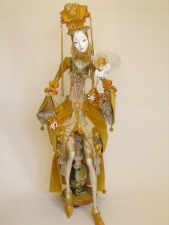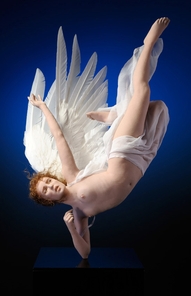Collector Dolls and Their Prices
 The nickname “collector” suits her perfectly. This doll is a work intended primarily for collectors. Not only that, but it's also a beautiful decoration that can, with its personal and distinctive charm, illuminate any room tastefully and elegantly. They can be a wonderf often becoming family heirlooms. They testify to our ancestors and to their lives.
The nickname “collector” suits her perfectly. This doll is a work intended primarily for collectors. Not only that, but it's also a beautiful decoration that can, with its personal and distinctive charm, illuminate any room tastefully and elegantly. They can be a wonderf often becoming family heirlooms. They testify to our ancestors and to their lives.
How can a collectible doll be distinguished from others? Every collector's doll is marked with the author's name or the name of the manufactul personal gift that becomes an unforgettable and eternal expression of affection or love with their originality, uniqueness and the artistic care taken during its creation. Art dolls go perfectly with other decorations in a room, whether it's a painting, sculpture, or modern installation made of glass or metal. These dolls come with a legacy of ancient importance,urer. It should also be clearly marked whether the doll is made as a single work or is a member of a series along with the serial number of each particular doll – this information should not be missing. These designations are typically either on the head or on the back of the doll.
However, any serious collector's doll always has a certificate with similar information, such as on its sign: author, limited series and number of the work, material, and the personal signature of the author.
Today's art dolls can be made from either porcelain or from a contemporary material such as plastic or cloth.
Dolls are divided into three groups, according to the method of manufacture:
First, there are dolls made as a single copy (one-of-a-kind), which are absolutely unique. They are made by famous professional artists of the highest caliber. The collector can be assured that the doll has a high artistic and collectible value. Very often, they are made from modern plastics, as this allows for a very fine level of detail.
This group of authors include Ankie Daanen, Natalia Pobedina, Laura Scattolini, Annadan and many other artists.This group also includes dolls made from more traditional materials, including porcelain. Although it is much more complex to create this kind of dolls, there are artists who can conjure up miracles from the porcelain, such as Judith and Lucia Friederici, Alla Beljaeva, Marlaine Verhelst.
This category also includes cloth dolls, which are made as a single copy. Among the most important authors are Lisa Lichtenfels, Tatjana Ovcinikova, Patti Medaris Culea and Barbora Willis.
The uniqueness and individuality of unique dol
ls and authors' professionalism determines the price on a piece-by-piece basis. Their price range can be anywhere from $500 up to $15,000. In some rare cases, the price can even go as high as a staggering $50,000.
The second group includes those artists who create their dolls in limited editions. The authors themselves determine the size of the edition and publish it in annual catalogs. This is typically anywhere between 3 to 20 units, the maximum being 50 dolls. After casting the pieces, the mold is broken in the presence of witnesses and the collector can be absolutely sure that the doll they have in their collection is truly a rare work. The basic material is porcelain in the category and prices range from $1,000 all the way up to $15,000. Examples of these creative artists are Hildegard Günzl, Sylvia Weser, Annette Himstedt, Maja Bill-Buchwalder and more.
Some talented authors don't need to create dolls with their own hands, but rather they can sell the idea and designs to a firm that produces limited-edition dolls from porcelain, vinyl or uses Biggidur®.
The current trend is to incorporate a series of porcelain dolls with vinyl as well. These dolls, for example, can be found in the works of Hildegard Günzl, Annette Himstedt, Vera Scholz, Hanna Goetz or Zofia and Henry Zawieruszynski. They are produced in large batches – usually from 250 to 5,000 dolls. This corresponds to the prices, which range between $100 and $1,500, the price of such dolls very rarely climbs to $2,500. Even though these dolls are produced in such large batches, they remain popular among collectors.

One of the new trends in the doll world today is production replicas, that is, copies of historical dolls from major companies. These dolls are in no way regarded as forgeries; rather, each replica has a certificate which lists the standard information in addition to information about the original doll it was designed after. Prices of doll replicas can range anywhere from $1,500 to $5,000.
A large number of doll artists also make portrait dolls. The customer in this case is directly involved in the creative process. Often, such dolls are made from photographs. They are mainly produced as an original gift that will bring a stunning surprise. It is difficult to tell whether or not such a doll will become a collectible rarity, but in any case for your loved one it becomes a priceless gift.
It is true that currently doll art is valued very highly. Proof of this can be seen in Lichtenfels's textile work, which is housed in the Louvre in the modern art department.
